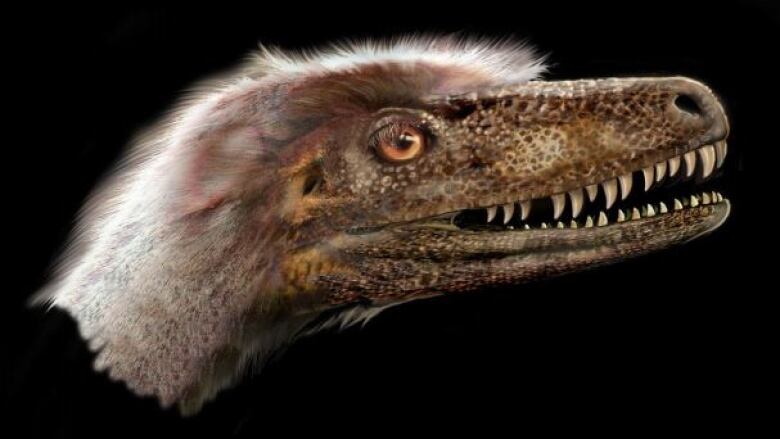'A scientific gold mine': Alberta fossil sheds new light on how raptors evolved
'This ranks in the top discoveries of my career,' says paleontologist Philip Currie

An "exquisitely preserved"fossil of a small feathered dinosaur discovered in an Alberta provincial park is providing new information on how theropod dinosaurs evolved around the world.
The 76-million-year-old species, known as Saurornitholestes langstoni, was long thought to be closely related to Velociraptor from Mongolia that some researchers called Velociraptor langstoni.
The new researchis from University of Alberta paleontologists Philip Currie and Clive Coy, working with fellow paleontologist David Evans of the Royal Ontario Museum.
Coy discovered the skeleton in Alberta's Dinosaur Provincial Park in 2014.
It is "remarkably complete and exquisitely preserved," with all the bones except for the tail preserved in life position, the U of A said in a news release Friday.
"This ranks in the top discoveries of my career," Currie said."It is pretty amazing."
The discovery shows how Saurornitholestes is different from Velociraptor.
It also identifies a unique tooth evolved for preening feathers and provides new evidence that the dromaeosaurid lineage from North America, which includes Saurornitholestes, is distinct from an Asian lineage that includes the famous Velociraptor,the news release said.
"Paleontology in general is a gigantic puzzle where most of the pieces are missing," Currie said."The discovery and description of this specimen represents the recovery of many pieces of the puzzle."
'Most complete and best-preserved' skeleton
Saurornitholestes is a small feathered carnivorous dinosaur within the dromaeosaurid family that was previously known from fragmentary remains.
"Because of their small size and delicate bones, small meat-eating dinosaur skeletons are exceptionally rare in the fossil record," Evans said.
"The new skeleton is by far the most complete and best-preserved raptor skeleton ever found in North American. It's a scientific gold mine."
The new research, which focuses on the dinosaur's skull, shows that the North American form has a shorter and deeper skull than Velociraptor. At the front of the mouth, the researchers discovered a flat tooth with long ridges, which was likely used for preening feathers.
The same tooth has been identified in Velociraptor and other dromaeosaurids.
The work also establishes a distinction between dromaeosaurids in North America and Asia.
"This changes our understanding of intercontinental movements of these animals and ultimately will help us understand their evolution, Currie said.
Future research will investigate the remainder of the skeleton and include analysis on the relationships between dromaeosaurids.












_(720p).jpg)


 OFFICIAL HD MUSIC VIDEO.jpg)
.jpg)



























































































